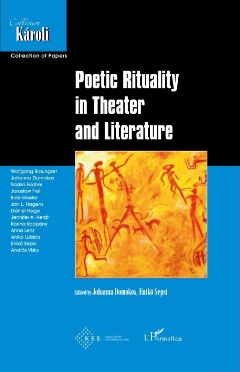

OCR
SASKIA FISCHER But with this unmasked individual claiming for empathy, the risk arises for the whole group to be exposed as revolutionary agitators. In order to continue their revolutionary mission, they must remain unrecognized. As they flee, as the riots break out, they kill the young comrade, not without asking him — very much like in the Jasager and Tanikö — for his approval of their deed. In contrast to the Japanese original and the Jasager, however, Brecht replaces the unconditional trust in the rightness of the old custom with the obligation to realize the communist revolution, and thus also with historical necessity. The fundamental conflict between the suffering of the individual, on the one hand, and the subordination of individual life to the dictates of a higher “power” or cause, on the other — be it fate, custom, or revolution — remains in Taniko, in the Jasager, and in Die Mafsnahme. The comparison shows that in Die Mafsnahme, it is now the revolutionary strategy that is of the highest value to the agitators. The realization of the communist idea becomes the power of fate — as in ancient tragedies or Noh theater — that determines their actions. For someone like Brecht, who from the very beginning of his writing and staging challenged precisely this trust in a higher value and the determination of individual actions by fate, this way of presenting can hardly be meant affirmatively but is, rather, highly critical. Besides the allusions to Japanese Noh theater, Die Mafsnahme is also full of references to the Passion of Christ. Thus, in the play, the young comrade observes and experiences various situations of suffering until he himself is eventually killed, remarkably because he shows empathy. Thereby, the play explicitly refers to and rejects the category of compassion [Mitleid], as Lessing conceptualized it, by drawing on the Christian commandment of brotherly love (see Mt 25). Instead, Die Mafsnahme unfolds an aesthetic of coldness and rationality, but which — similar to the young boy’s demise in Taniké — leads straight into the abyss and, respectively, into death. It seems that here Brecht is drawing the line at his own negation of compassion. A suggestive, strongly emotionalizing theater that demands compassion at all costs is for him highly manipulative. But if a culture is based on sheer rationality, it becomes brutal and totalitarian. His plays repeatedly demonstrate that he does not give up compassion once and for all, especially for the weak and helpless.*° Not only Augsburger Religionsunterricht und zu den literarischen Versuchen des Gymnasiasten, Göttingen, Vandenhoeck & Ruprecht, 1983; Karl-Josef Kuschel: Der andere Brecht. Versuch einer theologischen Analyse seiner Lyrik, Stimmen der Zeit 202 (1984), 629-643; Dick Boer: Die Gewalt, die Armut und das gute Leben. Bertolt Brecht und die Religion, Texte und Kontext 28 (2005), 30-42. How fundamental the Bible and the reference to religious and ritual forms and genres is also for his later work, I demonstrated in Fischer: Ritual und Ritualität, 137-180. Franz Norbert Mennemeier: Von der Freundschaft zur ‘Freundlichkeit’. Zu Bertolt Brechts Ballade von der Freundschaft und Legende von der Entstehung des Buches Taoteking auf dem Weg des Laotse in die Emigration, in G. E. Grimm (ed.): Gedichte und Interpretationen. Deutsche Balladen, Stuttgart, Reclam, 1988, 340-424; Detlev Schöttker: Bertolt Brechts s 42 e
Structural
Custom
Image Metadata
- Image width
- 1830 px
- Image height
- 2834 px
- Image resolution
- 300 px/inch
- Original File Size
- 1.33 MB
- Permalink to jpg
- 022_000047/0043.jpg
- Permalink to ocr
- 022_000047/0043.ocr
